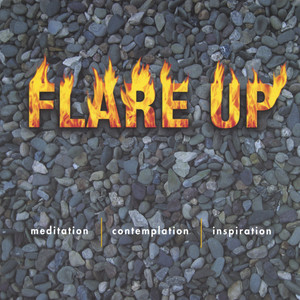
- 歌曲
- 时长
简介
James Nyoraku Schlefer, Shakuhachi Grand Master Called "A Master of the Shakuhachi" by The New York Times, James Nyoraku Schlefer is a leading performer and teacher of shakuhachi in New York City. He received the Dai-Shi-Han or Grand Master's Certificate in 2001, one of only a handful of non-Japanese to receive this high level award. In Japan he has worked with Aoki Reibo, Yokoyama Katsuya, Yoshio Kurahashi, Yoshinobu Taniguchi, and Mitsuhashi Kifu and his primary teacher in New York was Ronnie Nyogetsu Seldin. He holds a Master's degree in Western flute & musicology from Queens College and currently teaches music history courses at the City University of New York. He has performed at Lincoln Center, the Kennedy Center, Tanglewood's Ozawa Hall, BAM, the World Financial Center, and the Metropolitan, Brooklyn and Philadelphia Museums. Schlefer has three solo recordings, Wind Heart (which travelles 120,000,000 miles aboard the Space Station MIR) Solstice Spirit (1998,) and Flare Up (2002.) His music has been featured on NPR's All Things Considered. Nyoraku is a member of the Japanese music group Ensemble East, which performs traditional and modern music for Japanese instruments, including the shamisen and the koto. He has performed and lectured at the Juilliard School, Manhattan and Eastman Schools of Music, Vassar, Haverford, Moravian, Colby-Sawyer and Hunter Colleges, SUNY New Paltz, and at music festivals in the US, Asia and Europe. His performances include lectures about the origin, history, and development of this very special music. Schlefer began his musical career as a Western flutist and continues to perform on this instrument. He has composed several works for solo shakuhachi and shakuhachi ensemble, including a grant from the Mary Flagler Cary Charitable Trust for a new work to accompany dance, and a commission for an orchestral work with shakuhachi and koto to be premiered in 2005. A dedicated and respected teacher, Nyoraku Sensei is head of the Kyo-Shin-An teaching studio in New York City. He has edited books of traditional notation and written an etude book for shakuhachi technical development. The Timeless Sound of an Ancient Instrument The Shakuhachi is an end-blown bamboo flute that has been played in Japan for over 1200 years. It is the only instrument associated with the practice of Zen Buddhism, and was performed during religious rituals by priests of the Fuke sect. During the Edo Period (1600-1868), Shakuhachi-playing monks known as Komusô ("Priest of Nothingness") wandered throughout Japan playing the shakuhachi in exchange for food or alms. They would pass from temple to temple learning pieces that were played at the various temples, as each had developed its own music. Thus was the repertoire expanded and shared as they sought to strike a perfect sound that would enlighten the world. Traditional shakuhachi music, or honkyoku, are performed solo and are considered to express the original voice of the bamboo. The music is reflective and contemplative, and the instrument's penetrating sound often produces an effect similar to sitting in meditation. As the music, playing technique, and instruments themselves developed over the centuries, concert performances of honkyoku became more frequent and many of the pieces became stylized, emphasizing the musical as well as the spiritual elements. Today there are several different and distinct styles of shakuhachi honkyoku which represent different schools of playing. Shakuhachi music is at once spiritual and sensual. It combines breathing and silence with rhythm, melody, and the other elements of music to create a captivating and entirely unique art form of great depth and beauty. This extends to the secular, chamber music pieces, called sankyoku. Played together with shamisen (3-stringed lute) and koto (13-stringed harp/zither), this music has been performed for over three hundred years. The lyrics for the vocal pieces tell of the difficult life of the Geisha - the joys and sorrows of a life not your own - as well as poetry about the beauty of nature. Since the turn of the century, the unique sound of the shakuhachi has caught the imagination of composers throughout the world. Both solo and ensemble pieces have been written in many different styles reflecting the nationality and personality of the composers. Some modern works extend the limits of sound possibilities, whereas others offer a simpler yearning for simpler times. "The music of the shakuhachi could convey the most haunting evocations of misted mountains, battles lost, villagers returning at dusk, warriors locked in combat, and mothers singing babes to sleep. From birth to death, people n all walks of life could hear their joys, their sorrows, their anticipations, and their outcomes all conveyed in the deep, resonant tones of the shakuhachi - tones that could be as urgent or languorous, as harsh or mellow, as pellucid or murky as the musician wished." -Conrad Totman






